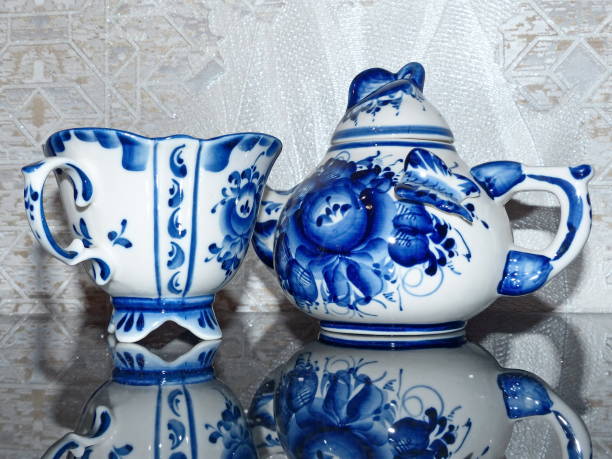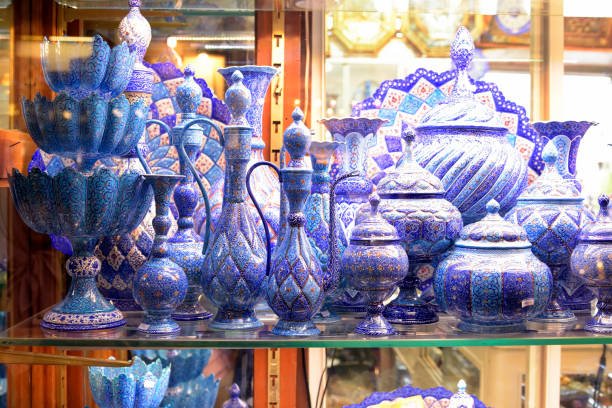
Few decorative pieces have the charm and usefulness of compact jars, primarily classic ginger jars, to enrich small rooms. Lotus Beauty: In-depth Review of Qinlang’s Blue and White Ceramic Ginger Jar
Some home decor objects are helpful and culturally and artisanally significant. Ginger jars, originally used to hold spices in China, are now a popular home decor item worldwide. Qinlang little ginger jars are notable for their fine craftsmanship and unique appearance. This article explores the subtle characteristics that distinguish Qinlang jars and why collectors and decorators love them.

Ginger jars originated in China and have large bodies, rounded forms, and distinctive domed lids. However, Qinlang little ginger jars differ. Their smaller size makes them excellent for bookcases and mantelpieces. When the artisan’s precision is tested, the scale reflects a more delicate construction procedure.
Clay is used to make Qinlang ginger jars. The artists use high-quality kaolin clay, which can be molded finely and fired at high temperatures without losing its integrity. This substance makes the jars durable and smooth, essential for intricate painting and glazing.
Firings follow clay shaping into the jar. First fire, bisque firing, hardens clay for glazing. This procedure is vital because it creates Qinlang jars’ brilliant colors and glossy surfaces. Qinlang jars have hand-applied traditional and modern color glazes for equal coverage and depth.
The beautiful themes of Qinlang ginger jars show their craftsmanship. Unlike mass-produced products, each jar has hand-painted designs inspired by historical Chinese patterns. Floral motifs, landscapes, and folkloric scenes narrate stories or wish for success, health, and happiness. The artisan’s expertise in applying these motifs shows his talent and attention to detail.
The use of Ming-era cobalt blue underglaze distinguishes Qinlang artistry. A translucent glaze is applied over a cobalt oxide mixture-painted design. The cobalt reacts to the heat during the final firing, turning a rich, deep blue that stands out against the white jar. This gorgeous blue and white design honors decades of Chinese and international porcelain creativity.
Modern Qinlang jars often use trendy colors or designs to attract more customers. From classic to modern eclectic, this mix of old and new allows for many decor choices—interior designers like these jars for their adaptability.
Handcraft is also evident in the jars’ texture. A smooth jar shows excellent throwing and glazing skills. The jar’s surface would show any defects, so experienced artisans must achieve this smoothness.
Finally, these jar lids are noteworthy. They fit snugly, safeguard the jar’s contents, and add aesthetic appeal. The lid is carefully constructed to match the base and often has themes or patterns comparable to the body.
In conclusion, Qinlang miniature ginger jars combine history and modernity. Their beauty and the skill and history needed to make them are their appeal. Jars are works of art that symbolize centuries of cultural traditions and the unmatched artistry of their builders. Qinlang jars’ ageless elegance and extraordinary artistry attract collectors and decorators.
Lotus patterns are popular on porcelain, especially ginger jars like the Qinlang series, due to their deep symbolic connotations and beauty. Tiny but beautiful, these jars contain centuries of cultural tradition and artistry. In many Eastern cultures, the lotus symbolizes purity and enlightenment, giving these decorative pieces a profound spiritual and artistic significance that makes them sought after in home design.
The Qinlang Small Ginger Jar, with its beautiful lotus pattern, shows how traditional art may fit modern settings. Chinese porcelain art dates back to the Tang Dynasty and inspired the jar’s harmonious form and function. The Ming and Qing Dynasties saw porcelain and ginger jars blossom as artistic expressions rather than utilitarian goods.
The Qinlang Small Ginger Jar’s porcelain is burned from fine kaolin clay at high temperatures to create its white base for the exquisite blue brush strokes of the lotus blossoms. Every jar is unique since each petal is painted precisely to respect nature’s flow and irregularity. Blue, frequently made from cobalt oxides, is practical due to its heat resistance and symbolism, recalling lotus aquatic habitats.
The porcelain lotus pattern has more than aesthetic charm. Lotuses bloom in dirt and symbolize purity and elegance in Buddhist and Taoist teachings. This symbolism embodies perseverance and rebirth, which are especially relevant in today’s fast-paced society. Thus, displaying a Qinlang Small Ginger Jar in a living environment expresses intellectual and spiritual values.
The use of these jars in home design shows their adaptability. They can stand alone on bookshelves or coffee tables to draw attention and conversation. Arrange them with other jars or decorative pieces for a more complicated, layered look. Qinlang jars are ideal for little places since they make a significant visual effect without taking up too much space.
The utility of ginger jars also makes them appealing. Previously used to store spices, jars can now hold flowers and hide clutter in modern homes. The Qinlang Small Ginger Jar’s secure cover and sturdy design make it ideal for these functions, combining beauty and functionality.
Ceramicists can enjoy collecting these jars. Each lotus-patterned jar tells a tale about its production through its shape, brushstroke, and slight color differences during burning. Collectors and designers seek jars with unique qualities due to their unexpected production.
Ceramic ginger jar customization is also popular among artisans and specialists. Traditional patterns like the lotus are valued for cultural significance, while modern artists may add or modify parts to convey their style. Eclectic interior design trends favor this mix of old and new.
Creating a lotus-patterned ginger jar requires creative skill and knowledge of generations-old materials and processes. Artisans must balance their artistic vision with the medium’s demands, such as glaze fluidity and kiln temperature. Each Qinlang Small Ginger Jar is a marvel due to its exquisite balance of history and skill.
Even though mass production is possible, handcrafted porcelain jars that follow traditional art techniques are the best. This dedication to craftsmanship makes each jar a gorgeous object and an heirloom with lasting worth.
Classical items in home décor add visual appeal and tie a space to art and culture. The exquisite lotus pattern of the Qinlang Small Ginger Jar is more than just a vessel; it is a link to the past and a beacon for timeless design in the present, illustrating that even the most miniature objects may have significant cultural and aesthetic worth.



